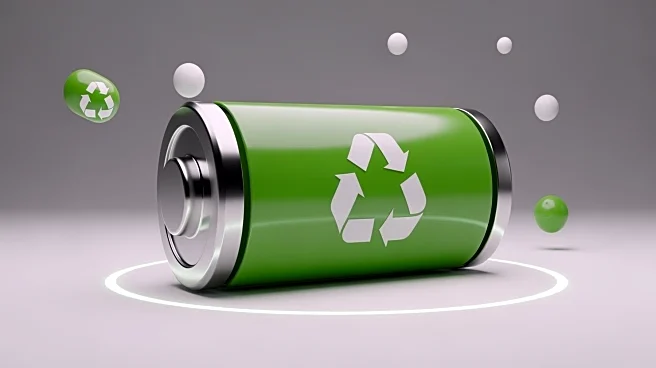What's Happening?
A recent study published in Nature highlights the potential for a circular economy strategy to significantly reduce carbon emissions from the lithium-ion battery supply chain. The research, led by Yufeng Wu, examines the carbon footprint associated with
each step of the battery production process, identifying mining as a major contributor to emissions. The study suggests that recycling metals through a circular economy could cut emissions by an average of 35.87% globally, with specific reductions of 39.14% in the U.S., 37.28% in the European Union, and 42.35% in China. The authors emphasize the need for global cooperation and region-specific regulations to achieve these reductions.
Why It's Important?
The findings underscore the importance of sustainable practices in the production of lithium-ion batteries, which are crucial for renewable energy applications such as electric vehicles. By reducing emissions, the circular economy approach could enhance the environmental benefits of these batteries, making them a more viable alternative to fossil fuels. The study also highlights a 'value-emission paradox,' where lower revenue-generating parts of the supply chain produce higher emissions, pointing to areas for improvement. Successful implementation of this strategy could lead to significant environmental and economic benefits, particularly for countries heavily involved in battery production.
What's Next?
The study calls for robust international agreements to ensure equitable benefits from recycling efforts, as some countries may gain more financially than others. Policymakers and industry leaders are expected to explore ways to integrate circular economy principles into existing frameworks, potentially leading to new regulations and partnerships. The focus will likely be on developing technologies and processes that facilitate efficient recycling and reduce emissions across the supply chain.
Beyond the Headlines
The shift towards a circular economy in battery production could have broader implications for global trade and environmental policy. It may drive innovation in recycling technologies and encourage collaboration between nations, fostering a more sustainable approach to resource management. Additionally, the strategy could serve as a model for other industries seeking to reduce their carbon footprint.














